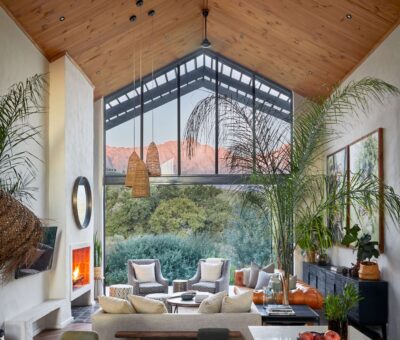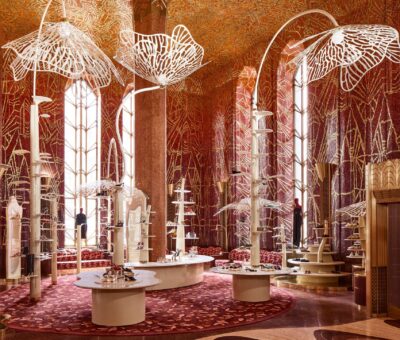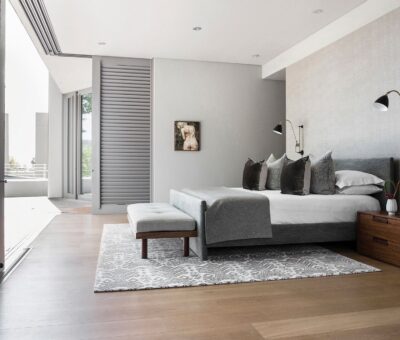DDL: 7 Tips To Choosing The Right Colour Scheme For Your Home
Feeling blue, green with envy or seeing red… You only have to look around you to find a colour for every emotion or occasion. But colour is more than just a combination of shades and tones that help us express ourselves visually – it’s also a powerful styling tool that can influence the mood and atmosphere of your home.
The very thought of introducing a new colour scheme into your home can be overwhelming, especially when deciding which colours complement each other or enhance your existing furniture. And while there may not be a right or wrong choice when selecting the colour that will define your interior space, we do have 7 tips from industry experts that will help you choose the right colours to transform your home.
Let’s Talk Colour
Before you start diving into the complexities of colour matching, there are a few terms you should make yourself comfortable with. Understanding this colour language will help you navigate your way through many interior decorating conversations:
- Primary colours: Red, blue and yellow. Primary colours can’t be made by mixing colours together.
- Secondary colours: Green, orange and purple. Secondary colours can be made by mixing primary colours.
- Tertiary colours: Six shades that can be made by mixing primary and secondary colours together. You can then add black, grey or white to change the hue, tint or shade.
- Shade: Refers to the lightness or darkness of a colour. The term is also used when referring to similar colours such as ‘shades of green’ or a ‘darker shade of blue’. Mixing black to a colour will alter the shade.
- Hue: Refers to the brightness or deepness of a colour. Mixing grey to the colour will affect its hue.
- Tint: Refers to a shade of colour. Adding white to a colour will change the tint.
The Wheel That Keeps on Giving
In many ways, a colour wheel is a decorator’s best friend. Once you understand the basic principles of how it works, the colour wheel can be very valuable when choosing colours for your home:
- Warm colours: One side of the colour wheel will display the warm colours such as reds, oranges and yellows.
- Cool colours: Cool colours such as blues, greens and purples will be on the opposite side.
- Complementary colours: To discover different colours that work well together you’ll want to look at the complementary colours. You can find these by looking across the colour wheel. For example, blues on one side and yellows on the other.
- Analogous colours: Analogues colours will include several slices (typically three) of the colour wheel. These are colours that work well together without the contrast you’d experience by using a complementary colour scheme. Looking at the colour wheel, you’ll see an analogous colour example such as green, blue and purple or yellow, yellow-green and green.
- Monochromatic colours: An interior using a monochromatic palette will be using various shades of the same colour, such as blacks and greys. To find a monochromatic scheme, you’ll only be looking at one slice of the colour wheel.
Consider the Space
The size of your room can play a big part in choosing the right interior décor colour. Light paint colours are usually best for large rooms, as dark rich colours in a large space may be too overpowering. Contrary to popular belief dark rich colours can be used in small spaces to create an intimate interesting space. If you would like a small space to appear larger than it is, cool light colours, like sky blue, make a room appear larger than it is. Red at the end of a passage would be a good choice if you wanted to make a long passage appear shorter.
Feeling It
The colours you choose will affect the atmosphere and energy of the space you are decorating. Generally, warmer colours like red, orange and yellow add energy – perfect for spaces where you want to create an uplifting, stimulating and social atmosphere. The cooler colours – blue-green, blue and purple are more calming and relaxing.
Apart from the mood, the colour might also affect the temperature of the room. If you’re looking to decorate a naturally cool bedroom in blue, look for a shade that has a warmer undertone so that the room does not appear even colder than it is. Add lots of warm accents in orange, red or blue to add extra warmth. Vice versa for a warm room, as warmer colours will raise the temperature even more.
Keep the Balance
Accent colours are a great way to add interest and uplift a colour scheme, but can get overwhelming if not done right. The 60-30-10 rule is a popular method used for colour scheming. Where 60 refers to the main colour used for 60% of your room – usually a neutral wall colour. Another colour in a similar shade and tone is used for 30% – this could be the furniture and carpets. You can use different textures to add more interest here. The last 10% is for an accent colour in a totally different shade. This could be an accent wall, a colourful piece of furniture or fabric or colourful home accessories to make the room pop interest.
Seek Inspiration Far and Wide
The colour wheel doesn’t have to be your only guide to choosing a colour for your home. Start with what you already have in the room. Look at the upholstery of your furnishings, the flooring and your accessories including artwork. Draw clues from your interior to help strengthen your colour palette.
For everything trendy in colour, visit www.pantone.com. Here you’ll find reports and colour forecasts with a global point of view on the movement of colour trends across current and future seasons. You can also explore different interior décor magazines and shop displays for more local ideas and flavours. It may be helpful to put together a mood board to ensure your colour palette is coherent with the rest of your interior.
Seek Inspiration Far and Wide
Finding a complimentary colour palette is one thing, and liking it is another. Remember, you’re going to have to live with your colour choice for some time, unless you want to experience the expense of redecorating again soon. Don’t get too hung up on the latest trends, or the colour wheel. Your colour choice should always reflect your personality.
Are you ready to experiment, but not sure where to start? The experienced home décor specialists from DDL are ready to help you release your home’s true colour potential.
Contact: DDL
You might also like...
-
Christopher De Bod: Designing for the Now: Top Interior Design Trends of 2025

As we move deeper into 2025, it’s clear that interior design is not simply about what looks good—it’s about how our spaces support the way ...
-
High Country Cottage: A Modern Mountain Retreat in the Heart of the Breedekloof Valley

Set against the awe-inspiring backdrop of the Breedekloof Valley and just 20km from the storied town of Tulbagh, High Country Cottage is not your ...
-
Printemps Lands in NYC: Inside the Luxe New Flagship at One Wall Street

French department store Printemps has made a bold American debut inside New York’s historic One Wall Street, where designer Laura Gonzalez has transformed two ...



























